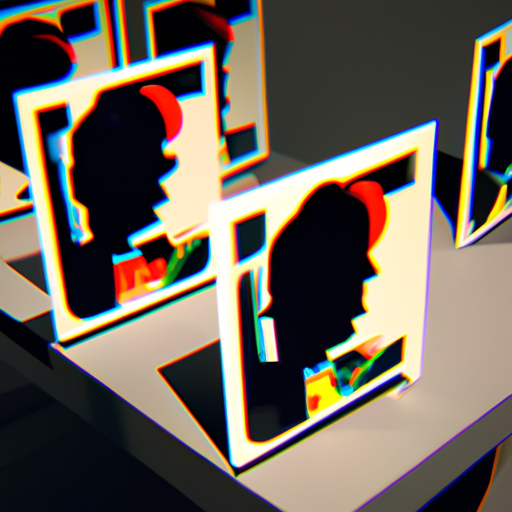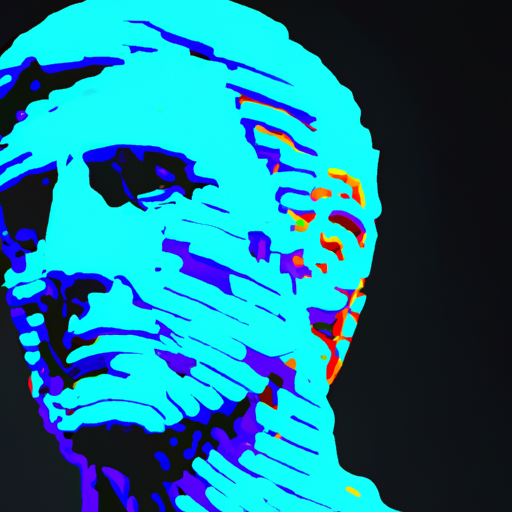
-
Table of Contents
- 3D Printing in Fine Art and Graphic Design
- The Benefits of 3D Printing in Fine Art and Graphic Design
- Applications of 3D Printing in Fine Art
- Sculpture
- Installation Art
- Printmaking
- Applications of 3D Printing in Graphic Design
- Prototyping
- Product Design
- Visual Communication
- The Future Potential of 3D Printing in Fine Art and Graphic Design
- Integration of Materials
- Collaboration and Accessibility
- Artificial Intelligence and Generative Design
- Conclusion
3D Printing in Fine Art and Graphic Design

3D printing technology has revolutionized various industries, and the world of fine art and graphic design is no exception. This innovative technology has opened up new possibilities for artists and designers, allowing them to bring their creative visions to life in ways that were previously unimaginable. From creating intricate sculptures to producing unique graphic designs, 3D printing has become an invaluable tool in the artistic process. In this article, we will explore the impact of 3D printing on fine art and graphic design, examining its benefits, applications, and future potential.
The Benefits of 3D Printing in Fine Art and Graphic Design
Before delving into the specific applications of 3D printing in fine art and graphic design, it is important to understand the key benefits that this technology offers to artists and designers:
- Unlimited Creativity: 3D printing allows artists and designers to push the boundaries of their creativity. It enables them to bring complex and intricate designs to life, which would be extremely challenging or even impossible to achieve using traditional methods.
- Time and Cost Efficiency: With 3D printing, artists and designers can significantly reduce the time and cost involved in creating their artworks. Traditional methods often require extensive manual labor and expensive materials, whereas 3D printing streamlines the production process and minimizes waste.
- Customization and Personalization: 3D printing enables artists and designers to create highly customized and personalized artworks. They can easily modify and adapt their designs to meet the specific needs and preferences of their clients or audience.
- Replication and Preservation: 3D printing allows for the replication and preservation of artworks. Artists can create multiple copies of their sculptures or designs, ensuring their work can be enjoyed by a wider audience while preserving the original piece.
Applications of 3D Printing in Fine Art
3D printing has found numerous applications in the world of fine art, revolutionizing the way artists create and present their works. Here are some notable examples:
Sculpture
One of the most prominent applications of 3D printing in fine art is in the creation of sculptures. Artists can now design and print intricate and complex sculptures with ease. This technology allows them to experiment with new forms, shapes, and textures, pushing the boundaries of traditional sculpting techniques. For instance, artist Bathsheba Grossman utilizes 3D printing to create stunning geometric sculptures that would be nearly impossible to achieve using traditional methods.
Installation Art
3D printing has also made a significant impact on installation art. Artists can now create large-scale installations with intricate details and complex structures. This technology enables them to bring their visions to life in a way that was previously limited by the constraints of traditional materials and techniques. An excellent example of this is the work of artist Janet Echelman, who uses 3D printing to create massive, ethereal sculptures that float in the air.
Printmaking
Traditionally, printmaking involved labor-intensive processes such as etching, engraving, or lithography. However, 3D printing has revolutionized this art form by allowing artists to create intricate relief prints with ease. Artists can design and print custom printing plates, resulting in unique and highly detailed prints. This technology has opened up new possibilities for printmakers, enabling them to experiment with different textures and layers.
Applications of 3D Printing in Graphic Design
3D printing has also had a significant impact on the field of graphic design, providing designers with new tools and techniques to enhance their creative process. Here are some notable applications:
Prototyping
3D printing has become an invaluable tool for graphic designers in the prototyping stage. It allows them to quickly and cost-effectively create physical prototypes of their designs, enabling them to test and refine their ideas before moving forward with production. This technology has streamlined the design process, reducing the time and cost involved in creating prototypes.
Product Design
3D printing has revolutionized product design by enabling designers to create complex and customized products. It allows them to iterate and experiment with different designs, materials, and functionalities. For example, Nike has utilized 3D printing to create customized shoes that perfectly fit an individual’s foot shape and running style.
Visual Communication
3D printing has also enhanced visual communication in graphic design. Designers can now create physical models and prototypes to present their ideas to clients or stakeholders. This tangible representation of their designs helps to convey the concept more effectively and allows for better feedback and collaboration.
The Future Potential of 3D Printing in Fine Art and Graphic Design
As 3D printing technology continues to advance, its potential in the world of fine art and graphic design is only beginning to be realized. Here are some future possibilities:
Integration of Materials
Currently, most 3D printers use plastic as the primary material. However, advancements in materials science are expanding the possibilities for artists and designers. The integration of new materials such as metals, ceramics, and even organic matter will enable artists to create more diverse and complex artworks.
Collaboration and Accessibility
3D printing has the potential to democratize the world of fine art and graphic design. As the technology becomes more accessible and affordable, artists and designers from all backgrounds will be able to utilize it in their creative process. This will foster collaboration and innovation, as artists can share their designs and collaborate on projects regardless of their physical location.
Artificial Intelligence and Generative Design
The combination of 3D printing with artificial intelligence and generative design algorithms opens up new possibilities for creating unique and innovative artworks. These technologies can generate complex and intricate designs that go beyond human imagination, pushing the boundaries of creativity even further.
Conclusion
3D printing has undoubtedly transformed the world of fine art and graphic design. It has provided artists and designers with new tools and techniques to unleash their creativity, enabling them to create intricate sculptures, large-scale installations, and customized products. The benefits of 3D printing, such as time and cost efficiency, customization, and replication, have revolutionized the artistic process. As the technology continues to advance, the future potential of 3D printing in fine art and graphic design is limitless. Artists and designers can look forward to exploring new materials, collaborating across borders, and pushing the boundaries of creativity with the integration of artificial intelligence. 3D printing has truly opened up a world of possibilities for artists and designers, and its impact will continue to shape the future of fine art and graphic design.
